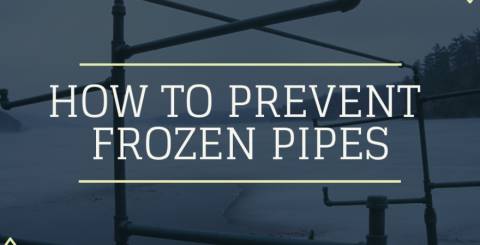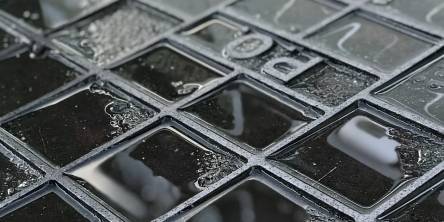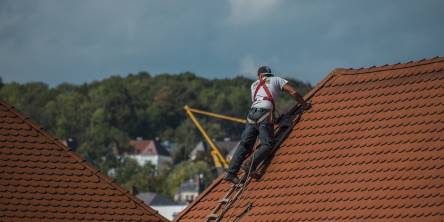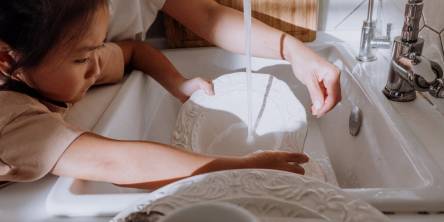How to Prevent Frozen Pipes

Winter is more than just cold weather season, it can also be home flooding season. As a result of burst pipes due to freezing weather, many people end up with flooding in their homes during the winter months. This can cause more problems than just the pipe burst. If water leaks into the house mold and mildew can cause rot and respiratory problems. One thing can lead to another and cause a mountain of issues, not just now, but when everything thaws out. If this is in business, even more problems can occur depending on how large the building is and how many other issues are affected by the pipe issue.
There are some ways you can prevent this from happening with a few easy care steps.
- Insulate Exposed Pipes: Purchase some snap on foam insulation from the hardware store and insulate all water pipes in the basement, crawlspace, attic, and exterior walls if accessible. Don’t forget about joints attach pieces together with duct tape.
- Bleed Sprinkler Systems: If you have an automatic sprinkler system it will need to be shut off during the cold months before you do that you will want to bleed the lines of any water with compressed air.
- Laundry Room: Run a few warm water loads periodically to keep the pipes warm. If there is a faucet on an outside wall you will want to drip the faucet, this simply means turn the water on just enough so that the faucet drips to keep pressure and water moving through the pipes. This should be done with any faucet on an outside wall.
- Icemaker: If the water line to your fridge runs under your home keep your icemaker set to making ice to keep it running.
- Give Special Care to Sinks on Exterior Walls: If you have a sink on an exterior wall you will want to leave the faucet running just enough to drip to keep the pressure in the pipes. It is also good to leave the under sink cabinet doors open a crack to let the indoor air give heat to the under sink pipes.
- Garage: Leave the garage door closed during the winter.
- Basement: Close and weatherstrip exterior doors and windows in the basement.
- Outside Faucets: de-tach the garden hose and cover with insulated foam faucet covers.
Thawing Frozen Pipes
Shut off the Water: turn off the main water valve to the house before doing anything. If the pressure of the water pushes frozen water through it could damage the pipe and then cause a break.
Open the Connecting Faucet: determine which faucet the pipe runs to and turn it to the on position to relieve built up the pressure.
Heat the Pipe: Using a low power heating device such as a hairdryer, electric heat tape, or space heater, apply heat to the frozen section of pipe. Start at the end near the interior faucet and work toward the exterior end.
Check for Leaks: When the pipe is thawed turn off all water to faucets and check for leaks or watch the water meter to see if water is still running, this will tell you if there is a leak.
Related Post: How to avoid winter freezing damage to trees
If Your Pipes Do Burst
In the event of a burst pipe and flooding in your home, you will want to shut off the water right away, call an emergency water damage restoration company, and begin removing as much water as possible while the pros are on their way.
If you're too late, you may need to contact an emergency water damage service.
Similar Articles
Cockroaches are one of the most common pests found in homes and businesses, and they are known for their resilience and ability to thrive in even the most unsanitary conditions. These pests can quickly infest kitchens, bathrooms, and other areas, spreading bacteria, allergens, and other harmful pathogens.
A well-maintained yard drainage system is key to preserving the beauty and health of any property. Poor drainage can lead to standing water, soil erosion, and even foundational damage to structures over time.
Keep your seaside home in top shape with these 4 expert tips! Learn about weatherproof materials, smart maintenance, and managing coastal challenges effectively.
Explore the future of roofing! Discover energy-efficient materials, smart systems, and sustainable designs reshaping modern home construction trends.
HVAC stands for heating, ventilation, and air conditioning. These all-in-one systems keep your home comfortable and improve air quality throughout a building. Often used in commercial buildings, HVAC units are increasingly used in residential buildings.
Safeguard your home after storms with timely roof repairs. Detect damage early, choose durable materials, and rely on a pro for lasting protection and peace of mind.
Learn how to balance a clean home and family life with these 6 practical tips to manage clutter, involve kids in chores, and set realistic expectations.
Homeowners are increasingly drawn to farmhouse-style architecture, which creates an inviting atmosphere in their homes that prioritizes comfort and coziness over aesthetics.
Discover transformative home renovation ideas for modern living, with trends, expert tips, and sustainable, budget-friendly practices to elevate your space.









